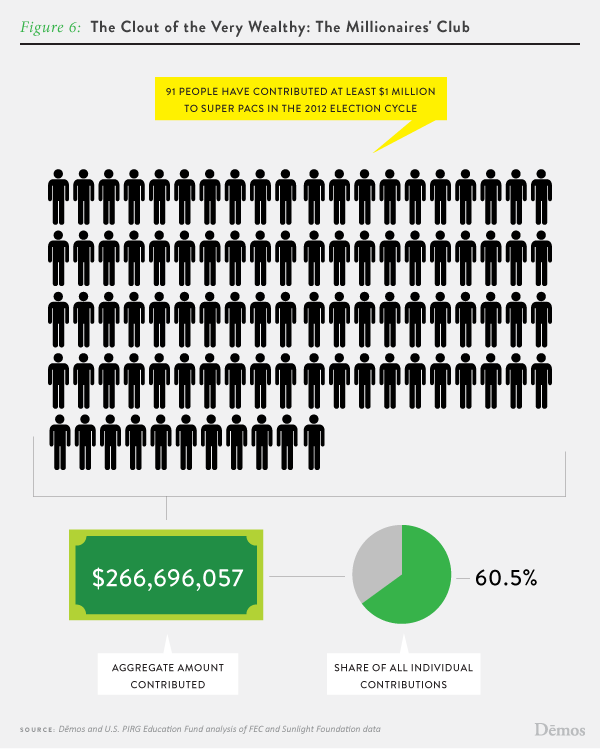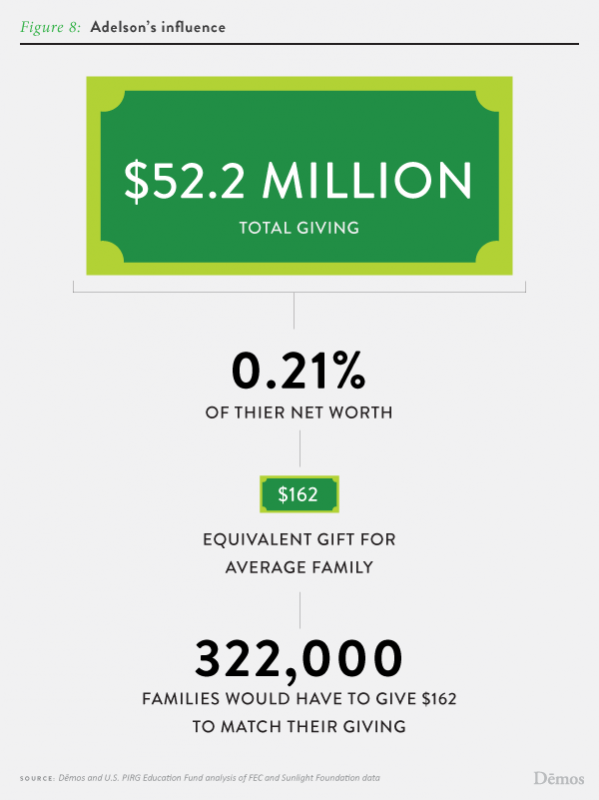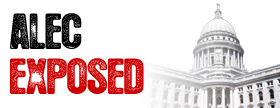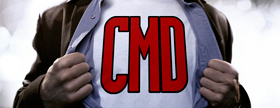Outside Election Spending Up at least 400% Since 2008
Reported spending by outside groups like Super PACs and dark money organizations has topped $1.11 billion, a 400 percent increase over total spending in 2008, according to a new analysis from Demos and U.S. PIRG.
 "On Election Day, we're all supposed to have an equal say," said Adam Lioz, Counsel for Demos. "But, next week a small group of millionaires and billionaires will have more influence than millions of middle class families."
"On Election Day, we're all supposed to have an equal say," said Adam Lioz, Counsel for Demos. "But, next week a small group of millionaires and billionaires will have more influence than millions of middle class families."
The U.S. Supreme Court in Citizens United v. FEC opened the door to much of the spending. That decision directly led to the rise of Super PACs, which are responsible for half of all reported spending, and which according to the Demos/ U.S. PIRG analysis are largely funded by just a handful of donors -- 60.5% of the $440.9 million raised by Super PACs from individuals came from just 91 people.
The Romney and Obama campaigns combined have reported raising $394.4 million from at least 1,972,000 individuals giving less than $200. In contrast, just 629 donors were responsible for approximately the same amount in Super PAC donations.
Total "Dark Money" Spending Unknown
Nearly one-quarter, or $257.9 million, of the $1.11 billion reported to the FEC came from "dark money" nonprofits that do not disclose their donors, like Americans for Prosperity or Karl Rove's Crossroads GPS. However, this number only reflects part of the story -- these groups are not required to report spending on "issue ads" that do not explicitly call for the election or defeat of a candidate, unless those ads are run close to the election. For example, between January 2011 and June of 2012, Crossroads GPS spent $44 million on ads in the presidential and congressional races, much of which was never reported.
Of the spending that has been reported, the biggest dark money players are Crossroads GPS (reporting $68 million), the U.S. Chamber of Commerce ($35 million), Americans for Prosperity ($33.8 million), Americans for Tax Reform ($15.7 million), and Americans for Job Security ($15.6 million). Demos and U.S. PIRG were able to obtain more complete data about spending in the presidential election, and found that approximately 1/3 of all election ads come from dark money groups that do not disclose their donors.
 "Americans across the political spectrum have long held transparency in campaign funding to be crucial," U.S. PIRG Democracy Advocate Blair Bowie. "When citizens can't follow the money voters can't judge the credibility of political communications and corporations and other special interests can fund misleading advertisements without facing accountability."
"Americans across the political spectrum have long held transparency in campaign funding to be crucial," U.S. PIRG Democracy Advocate Blair Bowie. "When citizens can't follow the money voters can't judge the credibility of political communications and corporations and other special interests can fund misleading advertisements without facing accountability."
Gambling Magnate Adelson Gives at Least $52.2 Million
The top donor this election cycle is billionaire Sheldon Adelson, who along with his wife Miriam has given $52.2 million to Super PACs. This astonishingly large sum is only .21% of their net worth. It would take more than 322,000 average American families donating an equivalent share of their wealth ($162) to match just the Adelsons' giving.
"Unlimited, corporate, and secret money continues to undermine the principle of 'one person, one vote,'" Lioz said. "It's more important than ever that Americans use the power of their votes to push back and make their voices heard."




